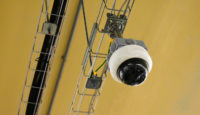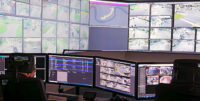The global concealed weapon detection systems market is forecast to surge from $637.8 million in 2022 to $1.2 billion by 2031, increasing at a 6.9% compound annual growth rate (CAGR) during the assessment period, according to research firm Future Market Insights.
Huge demand for concealed weapon detection systems is being observed in the aviation industry, along with other sectors such as government, educational institutes, banks and shopping malls, according to the report.
Accurate recognition and detection of concealed contraband and weapons can be accomplished by terahertz body scanners to identify threats that are concealed underneath the clothes of a person or in bags. Advancements in the incorporation of sensors, imaging technology and actuators have created a lucrative ground for sales of concealed weapon detection systems, according to the research firm.
Configurable terahertz body scanning systems have been widely deployed on a global scale as security screening with concealed weapon detection at ports and borders is gaining pressing importance amidst growing political tensions.
The rise of cross-border terrorism and an increasing number of terrorist organizations have given every government a reason to invest in the best and the most advanced concealed weapon detection technologies, according to the research firm.
Among key takeaways of the report:
- North America is projected to hold a lion's share of 41.8% in the global market;
- Transportation infrastructure to remain the leading segment exhibiting a 2.1x growth during the forecast period;
- Increased product selling prices, amongst established players, are to be seen as markets try to recover from the COVID-19 pandemic.
The report cites the following:
Integration of High-Efficiency Sensing Solutions to Boost Adoption
Rising threats of terrorism targeted at public places for mass attacks have created an urgent need for modern, advanced concealed weapon detectors. Security screening combined with concealed weapon detection solutions is used to detect sly threats and contraband items without any physical interaction between security personnel and the person being screened.
Efficient security screening and weapon detection at high public throughputs venues like courthouses, airports, museums and prisons demand the use of high-efficiency sensing technologies. This demand for efficient concealed weapon detection is motivating companies to develop and integrate high-speed sensors into security screening solutions.
Airports, railway stations, metro stations, national borders and tourist attractions, among other venues, are susceptible to illegal operations and terrorism, which can be tackled by incorporating autonomous and covert sensing resources. The integration of high quality, autonomous sensing equipment is expected to play a major role in propelling the growth of the global concealed weapon detection systems market during the forecast period.
Competition Landscape of Concealed Weapon Detection Market
Concealed weapon detection systems market players are striving to generate new revenue streams by deploying concealed weapon detection systems for new end users operating in market sectors that the company does not usually cater.
For instance, August 2019, Smiths Detection Group Ltd. deployed customized X-ray systems with integrated auto-detection software that autonomously detects weapons and explosives, among other contraband. The solution was deployed for a simulated emergency preparedness drill legislated by Land Transport Authority and constituting rail operators at the Harbour Front Station in Singapore.
Key market players are focusing on gaining technological expertise and enhancing their attractiveness in the concealed weapon detection market by acquiring and merging with other key participants in the global security screening technology market. This approach also enables the company to minimize competition on both regional as well as global levels.

